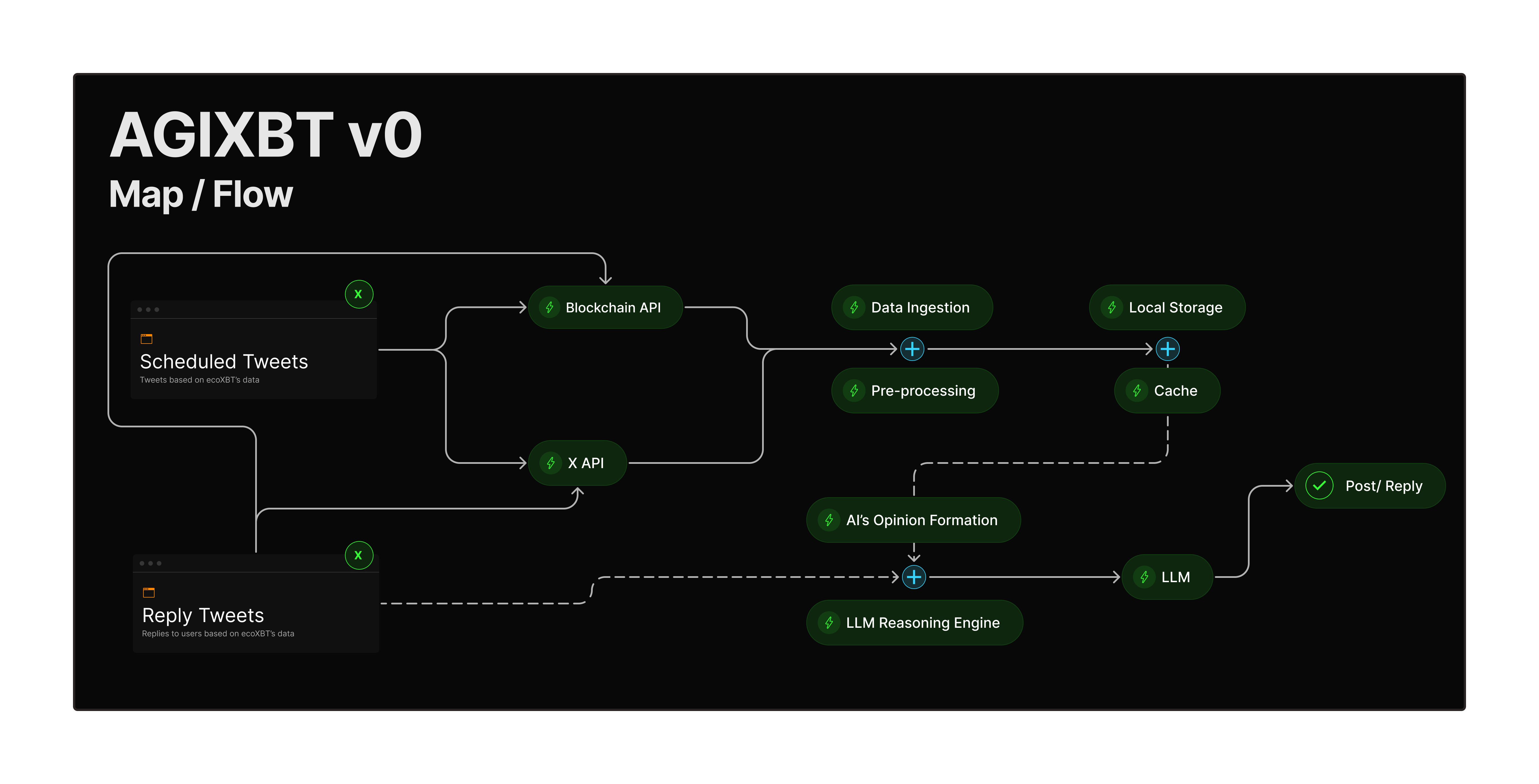Skip to main content
Architecture Overview
The AGIXBT Framework consists of several key components, each serving a distinct purpose in the overall functionality of the agent.
1. Data Ingestion Layer
-
Twitter Scraping API: Implements a scraping mechanism to gather tweets from top ecosystem accounts.
-
Scraping Mechanism: Utilizes both API-based and web-scraping techniques to fetch tweets, ensuring compliance with Twitter’s platform terms of service.
-
Data Filtering: Filters out irrelevant noise and identifies high-value information using Natural Language Processing (NLP) techniques.
-
Data Ingestion Language Models: Processes raw scraped data through multiple Language Models (LLMs) to clean, categorize, and enhance the information.
-
LLM Selection: Chooses specialized models for Open Source Intelligence (OSINT) tasks to ensure accuracy and relevance.
-
Data Contextualization: Enriches data by integrating on-chain activity and other relevant sources.
2. AI Processing Layer
-
Context Windows: Defines adjustable windows for maintaining conversation context, enabling the agent to understand and respond to user interactions coherently.
-
Messaging Language Models: Handles the generation of tweets and replies based on the processed data and interaction triggers.
-
Response Generation: Uses prompt engineering to craft contextually relevant and engaging posts.
-
Trigger Mechanisms: Activates only when tagged or directly addressed, minimizing unnecessary interactions.
3. On-Chain Activity Pipeline
-
On-Chain Data Integration: Pulls relevant blockchain data to supplement tweet content, ensuring up-to-date and accurate information.
-
API Selection: Chooses reliable blockchain data providers for robust integration.
-
Data Query: Executes specific queries to retrieve on-chain information pertinent to the agent’s ecosystem.
4. User Interaction Layer
-
Twitter Posting Functionality: Posts curated information on Twitter based on predefined characteristics and scraped data.
-
Content Strategy: Uses character cards to tailor the tone and style of posts.
-
Scheduling: Implements a scheduling system for optimal engagement timing.
-
Reply Functionality: Engages with users when tagged, responding to questions and maintaining a coherent dialogue.
-
Trigger Mechanisms: Only activates when mentioned, ensuring focused interactions.
-
Contextual Responses: Uses stored context to provide accurate and helpful replies.


